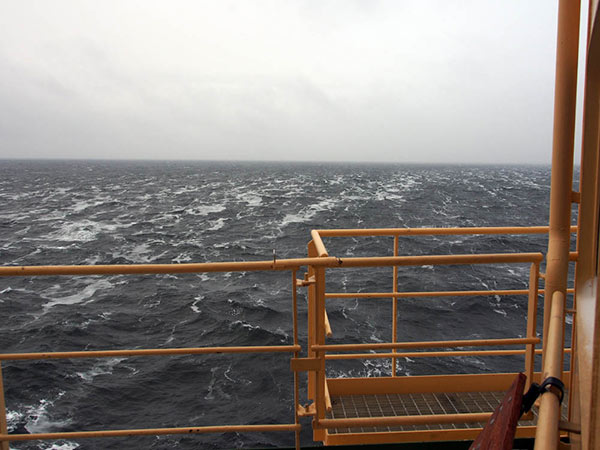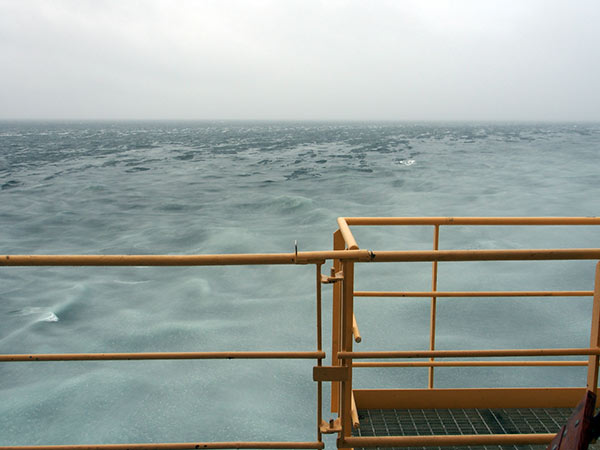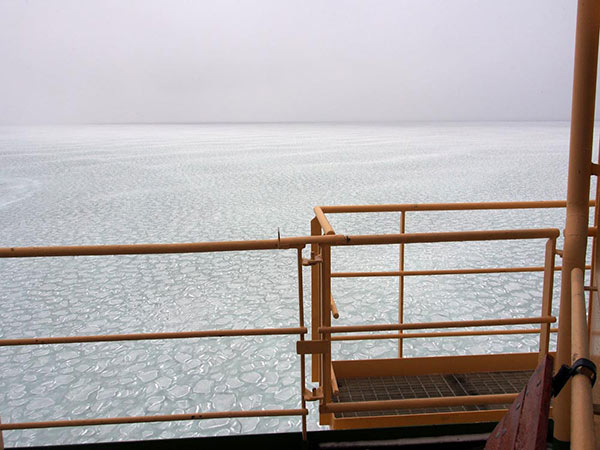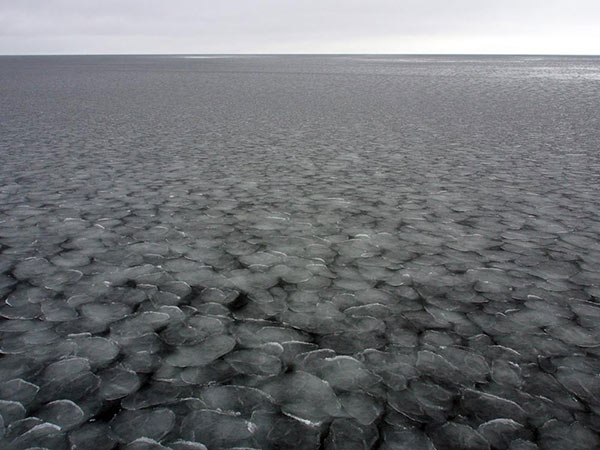The big freeze
|
We reached the sea ice edge over the Lomonosov Ridge at about 85°N September 20. This location is only 15 nautical miles south from where we crossed the Lomonosov Ridge 1996 during my first expedition to the Arctic Ocean. It was there we were the first to discover that thick glacier ice had grounded and eroded the ridge crest down to 1000 m below present sea level during previous glacial periods. The ice erosion was mapped with chirp sonar towed behind Oden; not at all an easy task. The chirp sonar records did not contain any directional information about where the thick icebergs, or possibly a coherent shelf ice, came from. Only one survey line across the ridge at about 85°N was acquired in 1996. To my surprise, no one has gone over these areas since 1996 and mapped them with modern technology. All icebreakers that passed here have only collected underway mapping data, and not stopped to survey the ridge crest properly. But on the other hand, the area around 85°N is usually covered by heavy sea ice. However, not this year! We are therefore in a unique position to map the crest with our modern multibeam sonar and finally after all years sort out the nature of the ice grounding in the deep central Arctic Ocean. All new data we have collected concerning the Arctic Ocean glacial history during Leg 2 SWERUS surveys along the East Siberian slope, the Arlis Plateau and southernmost Lomonosov Ridge made me extremely anxious to once and for all sort out what really has happened on the central Lomonosov Ridge. I will not report on the mapping results here, but I can say, they are fantastic! We have found yet another piece of the Arctic Ocean glacial puzzle!
|
| by Martin Jakobsson |


















